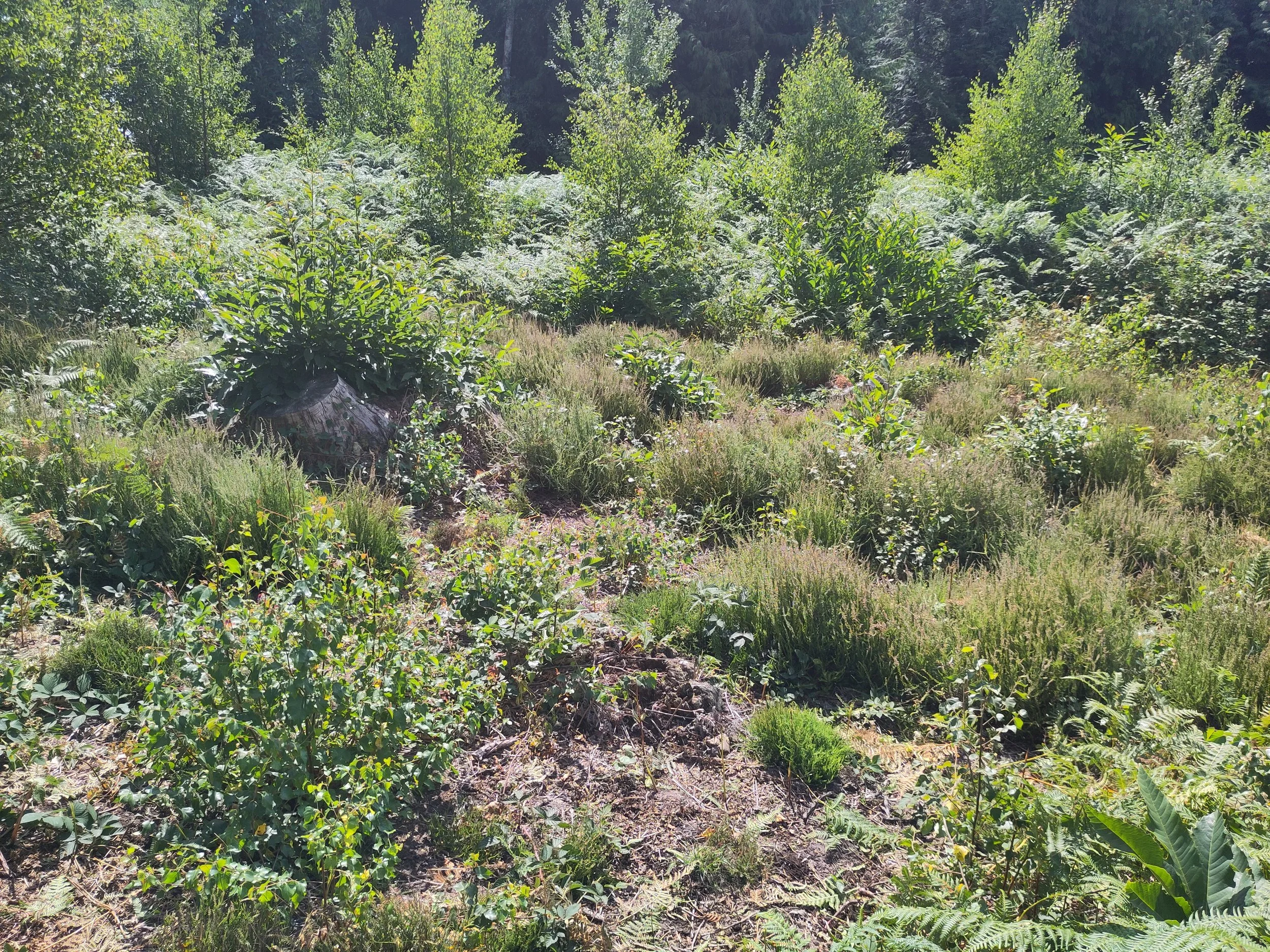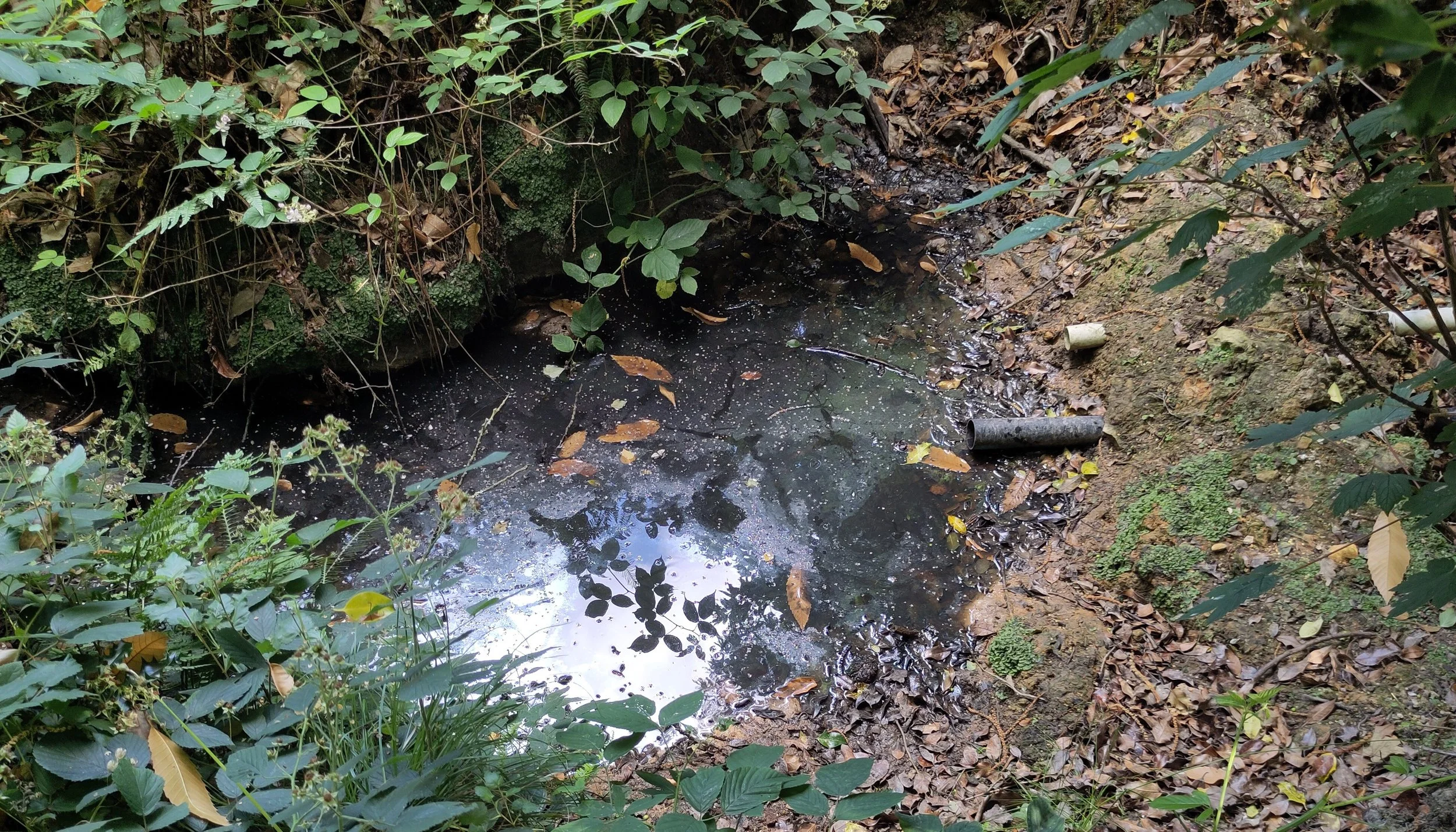Summer Drought, Shrews, Bracken Pulling, Hedge Shrubs, Dams and the Gunga Din Factor
This is my first post in a couple of months. As a hot April turned to hot and dry May, June and July, a rather belated hosepipe ban has been imposed on the SE Water supply area (it was obvious back in April that water shortages were inevitable, so why not start warning people earlier?)
My focus has largely shifted from my winter obsession with ponds and streams to managing the survival of hedge shrubs at Bat Park. Planted 5 years earlier, some of the then whips have done really well (especially Dogwood, Dog Rose and Guelder Rose). Others have done less well eg Hawthorn, Blackthorn, Hazel and Hornbeam. I suspect the latter were just too tastie for the taste buds of the deer we are plagued with, whereas perhaps the former were not so. Now that Bat Park is deer proof they are not a problem, here at least. I have to say that I'm amazed how stunted Hawthorns have refuse to die despite the deer and now the drought.
Public enemy number one though is now officially drought! I have been watering the Bat Park hedge plants once a week for at least a month in the absence of any help from the weather. This week I have brought along a couple of 15 litre plastic water cooler bottles. The plan is to fill these from the nearby tap, emptying the full bottle as the other one slowly fills. I feel a bit like Gunga Din at the front line rushing around doling out the water rations. Nonetheless, it is an effective strategy, keeps my heart rate up and falls in line with the current hosepipe ban.
I am soon joined by eight Wednesday Conservation Volunteers and I set them to work pulling bracken fronds in the heathland area of Bat Park. Other than common heather, bramble, birch and bracken very little grows on the heath. The heather plugs transplanted 5 years ago are now over 30cms tall and should produce a mass of pink flowers shortly. The impact of eight ‘vollies’ pulling bracken for 15 minutes is profound. Don't worry bracken lovers, we'll leave plenty of your favourite plants growing elsewhere.
Common Heather is making a comeback at Bat Park Heathland. Bracken has now been removed but it lurks at the fringes
Now that Bat Park hedge has had a little respite from the water shortage, I head to the lower wood to check out the ponds and Wilderness Stream – dry and very dry respectively (no moisture even 30cm beneath the stream’s bed).
I check the black poplar whips planted in this (so called) wet woodland in February. The woven deer guards are doing their job but at least one specimen is showing signs of water stress (I decide to slip it 750 ml of water from my personal supply of drinking water and the Gunga Din within me feels uplifted by the sacrifice).
The one area of permanent freshwater at Wilderness Wood occupies part of the former drainage ditch of the Wilderness Stream. When the stream’s course was redirected through the woodland this ditch became redundant. However it is a useful low point where some water still gathers. In 2023 I put a low earth dam across the ditch and repeated the process in 2024. Both years the new ponds held water right through the summer. The dams are fitted with 3 inch overflow pipes to cope with the significant flows when the autumn rains come. A resident frog splashes his personal pool in appreciation when I disturb him. I’m now going for the hat-trick digging a further dam downstream of the others. I love it when nature does most of the work for me.
Permanent freshwater can still be found in Wilderness Wood in the old course of the Wilderness Stream
In a couple of weeks 150 people will descend upon Wilderness Wood to participate in a variety of woodland focussed activities (wood framing, carving, cooking, singing, playing games, exploring, art and craft….) hopefully some will take part in further dam building. I have identified a suitable site in the lower wood for building ‘log’ and ‘woven’ leaky dams which will act as stream flow regulators, whilst another earth dam to create yet another permanent pond in the lower wood will complete the set.
As for the shrew? I wondered if he/she died of thirst, but a rather suspicious wound to the head suggests it was taken by a hawk and then dropped. It’s the first shrew I’ve seen at Wilderness Wood and sad that it is no longer alive.
My first Wilderness Wood Shrew - sadly no longer with us
“You’re a better man than I am, Gunga Din!”
David Horne 16/7/25



